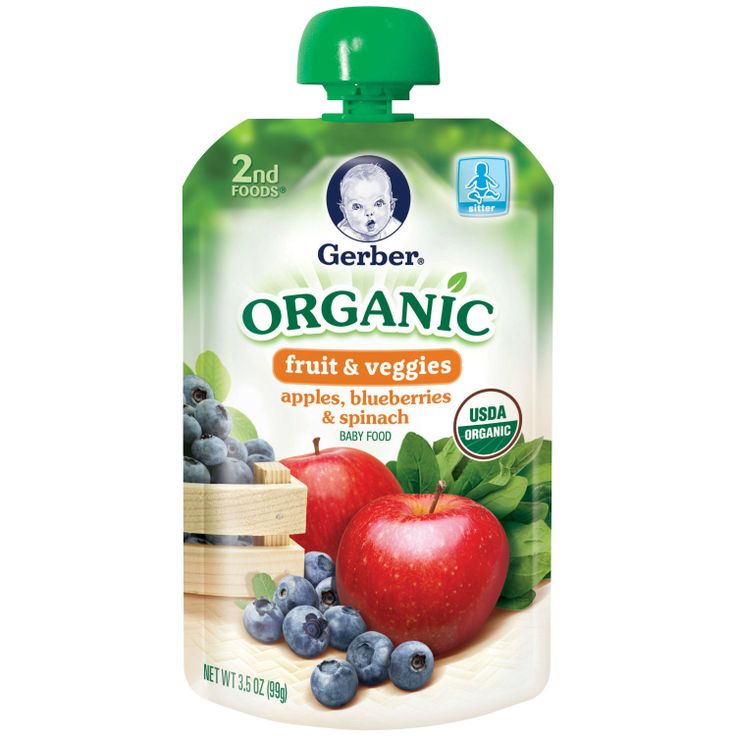Foods babies should avoid first year
Foods to avoid giving babies and young children
Salt
Babies should not eat much salt, as it's not good for their kidneys.
Do not add salt to your baby's food or cooking water, and do not use stock cubes or gravy, as they're often high in salt.
Remember this when you're cooking for the family if you plan to give the same food to your baby.
Avoid salty foods like:
- bacon
- sausages
- chips with added salt
- crackers
- crisps
- ready meals
- takeaways
Sugar
Your baby does not need sugar.
By avoiding sugary snacks and drinks (including fruit juice and other fruit drinks), you'll help prevent tooth decay.
Saturated fat
Do not give your child too many foods that are high in saturated fat, such as crisps, biscuits and cakes.
Checking the nutrition labels can help you choose foods that are lower in saturated fat.
See more on food labels.
Honey
Occasionally, honey contains bacteria that can produce toxins in a baby's intestines, leading to infant botulism, which is a very serious illness.
Do not give your child honey until they're over 1 year old. Honey is a sugar, so avoiding it will also help prevent tooth decay.
Whole nuts and peanuts
Whole nuts and peanuts should not be given to children under 5 years old, as they can choke on them.
You can give your baby nuts and peanuts from around 6 months old, as long as they're crushed, ground or a smooth nut or peanut butter.
If there's a history of food allergies or other allergies in your family, talk to your GP or health visitor before introducing nuts and peanuts.
See more on food allergies in babies and young children.
Some cheeses
Cheese can form part of a healthy, balanced diet for babies and young children, and provides calcium, protein and vitamins.
Babies can eat pasteurised full-fat cheese from 6 months old. This includes hard cheeses, such as mild cheddar cheese, cottage cheese and cream cheese.
Babies and young children should not eat mould-ripened soft cheeses, such as brie or camembert, or ripened goats' milk cheese and soft blue-veined cheese, such as roquefort. There's a higher risk that these cheeses might carry a bacteria called listeria.
There's a higher risk that these cheeses might carry a bacteria called listeria.
Many cheeses are made from unpasteurised milk. It's better to avoid these because of the risk of listeria.
You can check labels on cheeses to make sure they're made from pasteurised milk.
But these cheeses can be used as part of a cooked recipe as listeria is killed by cooking. Baked brie, for example, is a safer option.
Raw and lightly cooked eggs
Babies can have eggs from around 6 months.
If the eggs are hens' eggs and they have a red lion stamped on them, or you see a red lion with the words "British Lion Quality" on the box, it's fine for your baby to have them raw (for example, in homemade mayonnaise) or lightly cooked.
Hens' eggs that do not have the red lion mark should be cooked until both the white and yolk are solid. So should duck, goose or quail eggs.
So should duck, goose or quail eggs.
Avoid raw eggs, including uncooked cake mixture, homemade ice creams, homemade mayonnaise, or desserts that contain uncooked egg that you cannot confirm are red lion stamped.
Rice drinks
Children under 5 years old should not have rice drinks as a substitute for breast milk or infant formula (or cows' milk after 1 year old) as they may contain too much arsenic.
Arsenic is found naturally in the environment and can find its way into our food and water.
Rice tends to take up more arsenic than other grains, but this does not mean that you or your baby cannot eat rice.
In the UK, there are maximum levels of inorganic arsenic allowed in rice and rice products, and even stricter levels are set for foods intended for young children.
Do not worry if your child has already had rice drinks. There's no immediate risk to them, but it's best to switch to a different kind of milk.
There's no immediate risk to them, but it's best to switch to a different kind of milk.
Raw jelly cubes
Raw jelly cubes can be a choking hazard for babies and young children.
If you're making jelly from raw jelly cubes, make sure you always follow the manufacturers' instructions.
Raw shellfish
Raw or lightly cooked shellfish, such as mussels, clams and oysters, can increase the risk of food poisoning, so it's best not to give it to babies.
Shark, swordfish and marlin
Do not give your baby shark, swordfish or marlin. The amount of mercury in these fish can affect the development of a baby's nervous system.
Further information
For more information and advice about babies and food, see:
- food allergies in babies and young children
- your baby's first solid foods
- baby and toddler meal ideas
Your baby's first solid foods
When to start introducing solid foods
Introducing your baby to solid foods, sometimes called complementary feeding or weaning, should start when your baby is around 6 months old.
At the beginning, how much your baby eats is less important than getting them used to the idea of eating.
They'll still be getting most of their energy and nutrients from breast milk or first infant formula.
Giving your baby a variety of foods, alongside breast or formula milk, from around 6 months of age will help set your child up for a lifetime of healthier eating.
Gradually, you'll be able to increase the amount and variety of food your baby eats until they can eat the same foods as the rest of the family, in smaller portions.
If your baby was born prematurely, ask your health visitor or GP for advice on when to start introducing solid foods.
Why wait until around 6 months to introduce solids?
It’s a good idea to wait until around 6 months before introducing solid foods because:
- breast milk or first infant formula provide the energy and nutrients your baby needs until they're around 6 months old (with the exception of vitamin D in some cases)
- if you're breastfeeding, feeding only breast milk up to around 6 months of age will help protect your baby against illness and infections
- waiting until around 6 months gives your baby time to develop so they can cope fully with solid foods – this includes solid foods made into purées, cereals and baby rice added to milk
- your baby will be more able to feed themselves
- your baby will be better at moving food around their mouth, chewing and swallowing it – this may mean they'll be able to progress to a range of tastes and textures (such as mashed, lumpy and finger foods) more quickly, and may not need smooth, blended foods at all
Signs your baby is ready for solid foods
There are 3 clear signs which, when they appear together from around 6 months of age, show your baby is ready for their first solid foods alongside breast milk or first infant formula.
They'll be able to:
- stay in a sitting position and hold their head steady
- co-ordinate their eyes, hands and mouth so they can look at the food, pick it up and put it in their mouth by themselves
- swallow food (rather than spit it back out)
The following behaviours can be mistaken by parents as signs that their baby is ready for solid foods:
- chewing their fists
- waking up in the night (more than usual)
- wanting extra milk feeds
These are all normal behaviours for babies and not necessarily a sign that they're hungry or ready to start solid food.
Starting solid foods will not make your baby any more likely to sleep through the night. Sometimes a little extra milk will help until they're ready for solid foods.
Get tips to help your baby sleep well
How to start solid foods
In the beginning your baby will only need a small amount of food before their usual milk feed.
Do not worry about how much they eat. The most important thing is getting them used to new tastes and textures, and learning how to move solid foods around their mouths and how to swallow them.
They'll still be getting most of their energy and nutrients from breast milk or infant formula.
There are some foods to avoid giving to your baby. For example, do not add sugar or salt (including stock cubes and gravy) to your baby's food or cooking water.
Babies should not eat salty foods as it's not good for their kidneys, and sugar can cause tooth decay.
Tips to get your baby off to a good start with solid foods:
- Eating is a whole new skill.
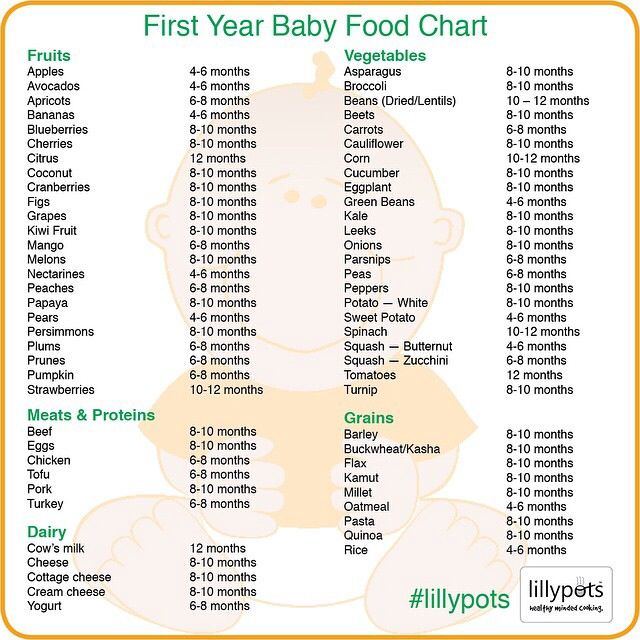 Some babies learn to accept new foods and textures more quickly than others. Keep trying, and give your baby lots of encouragement and praise.
Some babies learn to accept new foods and textures more quickly than others. Keep trying, and give your baby lots of encouragement and praise. - Allow plenty of time, especially at first.
- Go at your baby's pace and let them show you when they're hungry or full. Stop when your baby shows signs that they've had enough. This could be firmly closing their mouth or turning their head away. If you're using a spoon, wait for your baby to open their mouth before you offer the food. Do not force your baby to eat. Wait until the next time if they're not interested this time.
- Be patient and keep offering a variety of foods, even the ones they do not seem to like. It may take 10 tries or more for your baby to get used to new foods, flavours and textures. There will be days when they eat more, some when they eat less, and then days when they reject everything. Do not worry, this is perfectly normal.
- Let your baby enjoy touching and holding the food.
 Allow them to feed themselves, using their fingers, as soon as they show an interest. If you're using a spoon, your baby may like to hold it or another spoon to try feeding themselves.
Allow them to feed themselves, using their fingers, as soon as they show an interest. If you're using a spoon, your baby may like to hold it or another spoon to try feeding themselves. - Keep distractions to a minimum during mealtimes and avoid sitting your baby in front of the television, phone or tablet.
- Show them how you eat. Babies copy their parents and other children. Sit down together for family mealtimes as much as possible.
Texture progression
Once you've started introducing solid foods from around 6 months of age, try to move your baby on from puréed or blended foods to mashed, lumpy or finger foods as soon as they can manage them.
This helps them learn how to chew, move solid food around their mouth and swallow.
Some babies like to start with mashed, lumpy or finger foods.
Other babies need a little longer to get used to new textures, so may prefer smooth or blended foods on a spoon at first.
Just keep offering them lumpy textures and they'll eventually get used to it.
Safety and hygiene
When introducing your baby to solid foods, it's important to take extra care to not put them at risk.
Key food safety and hygiene advice:
- always wash your hands before preparing food and keep surfaces clean
- cool hot food and test it before giving it to your baby
- wash and peel fruit and raw vegetables
- avoid hard foods like whole nuts, or raw carrot or apple
- remove hard pips and stones from fruits, and bones from meat or fish
- cut small, round foods, like grapes and cherry tomatoes, into small pieces
- eggs produced under the British Lion Code of Practice (stamped with the red lion) are considered very low risk for salmonella and safe for babies to eat partially cooked
Always stay with your baby when they're eating in case they start to choke.
Choking is different from gagging. Your baby may gag when you introduce solid foods.
This is because they're learning how to deal with solid foods and regulate the amount of food they can manage to chew and swallow at one time.
If your baby is gagging:
- their eyes may water
- they might push their tongue forward (or out of their mouth)
- they might retch to bring the food forward in their mouth or vomit
Equipment checklist
- High chair. Your baby needs to be sitting safely in an upright position (so they can swallow properly). Always use a securely fitted safety harness in a high chair. Never leave babies unattended on raised surfaces.
- Plastic or pelican bibs. It's going to be messy at first!
- Soft weaning spoons are gentler on your baby's gums.
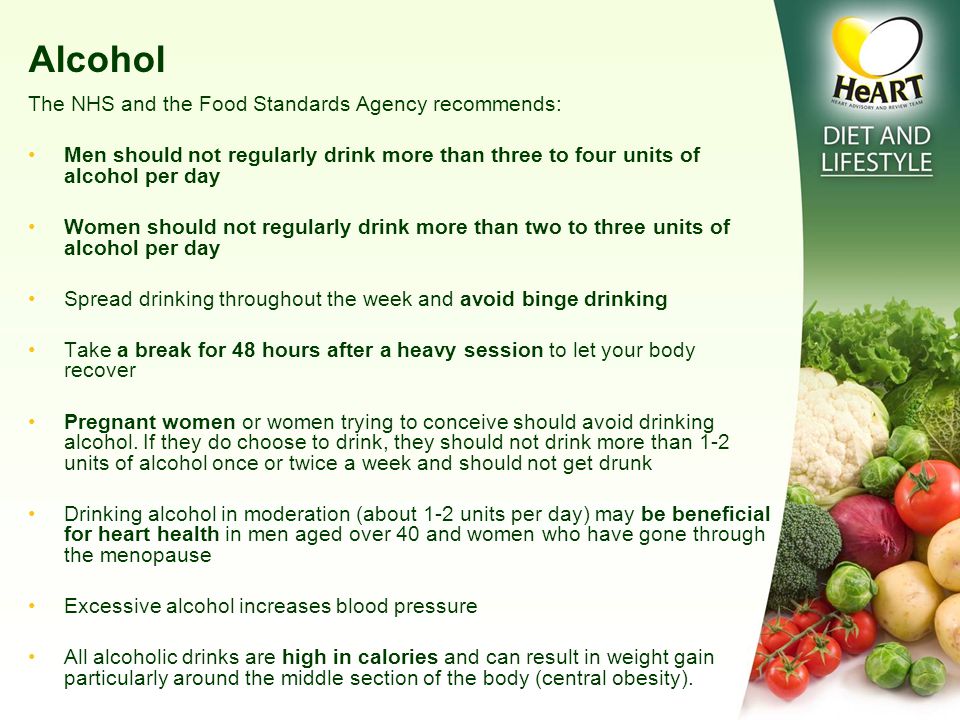
- Small plastic bowl. You may find it useful to get a special weaning bowl with a suction base to keep the bowl in place.
- First cup. Introduce a cup from around 6 months and offer sips of water with meals. Using an open cup or a free-flow cup without a valve will help your baby learn to sip and is better for their teeth.
- A messy mat or newspaper sheets under the high chair to catch most of the mess.
- Plastic containers and ice cube trays can be helpful for batch cooking and freezing small portions.
Find out more:
- tips to help your baby enjoy new foods
- children's food: safety and hygiene
- foods to avoid giving babies and young children
- how to stop a child from choking
- baby and toddler safety
Feeding your baby: from 0 to 6 months
Breast milk is the best food your baby can have during their first 6 months of life.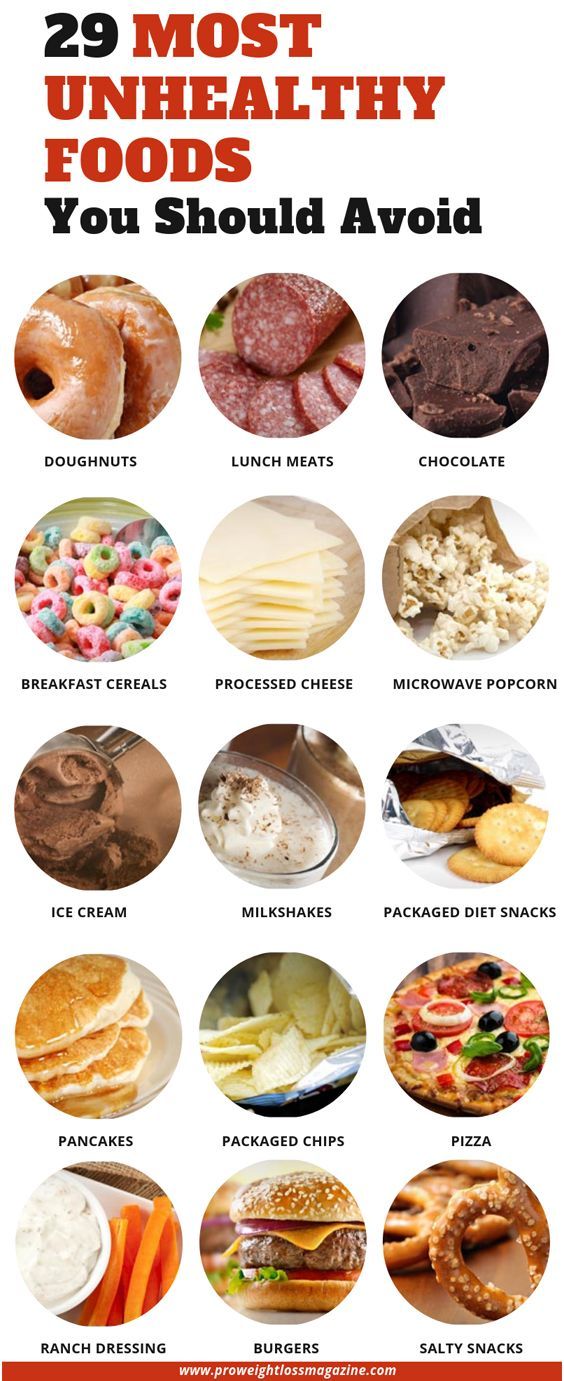
It's free, always available and at the perfect temperature, and is tailor-made for your baby.
First infant formula is the only suitable alternative if you do not breastfeed or choose to supplement breast milk.
Other milks or milk substitutes, including cows' milk, should not be introduced as a main drink until 12 months of age.
"Follow-on" formula is not suitable for babies under 6 months, and you do not need to introduce it after 6 months.
Babies do not need baby rice to help them move to solid foods or sleep better.
When using a bottle, do not put anything (such as sugar or cereals) in it other than breast milk or infant formula.
Vitamins for babies
It's recommended that breastfed babies are given a daily supplement containing 8.5 to 10 micrograms (µg) of vitamin D from birth, whether or not you're taking a supplement containing vitamin D yourself.
Babies having 500mls (about a pint) or more of formula a day should not be given vitamin supplements.
This is because formula is fortified with vitamin D and other nutrients.
All children aged 6 months to 5 years should be given vitamin supplements containing vitamins A, C and D every day.
Find out more:
- benefits of breastfeeding
- how to make up baby formula
- vitamins for children
Feeding your baby: from around 6 months
When they first start having solid foods, babies do not need 3 meals a day. Babies have tiny tummies, so start by offering them small amounts of food (just a few pieces, or teaspoons of food).
Pick a time that suits you both, when you do not feel rushed and your baby is not too tired.
Start offering them food before their usual milk feed as they might not be interested if they're full, but do not wait until your baby is too hungry.
Allow plenty of time and let your baby go at their own pace.
Keep offering different foods, even foods your baby has already rejected.
It can take 10 tries or more before your baby will accept a new food or texture, particularly as they get older.
Your baby will still be getting most of their energy and nutrients from breast milk or first infant formula.
Breast milk or infant formula should be their main drink during the first year. Do not give them whole cows' (or goats' or sheep's) milk as a drink until they're 1 year old.
You can continue breastfeeding for as long as you both want.
Introduce a cup from around 6 months and offer sips of water with meals. Using an open cup or a free-flow cup without a valve will help your baby learn to sip and is better for their teeth.
Using an open cup or a free-flow cup without a valve will help your baby learn to sip and is better for their teeth.
First foods
You might want to start with single vegetables and fruits.
Try mashed or soft cooked sticks of parsnip, broccoli, potato, yam, sweet potato, carrot, apple or pear.
Include vegetables that are not sweet, such as broccoli, cauliflower and spinach.
This will help your baby get used to a range of flavours (rather than just the sweeter ones, like carrots and sweet potato) and might help prevent them being fussy eaters as they grow up.
Make sure any cooked food has cooled right down before offering it to your baby.
Foods containing allergens (such as peanuts, hens' eggs, gluten and fish) can be introduced from around 6 months of age, 1 at a time and in small amounts so you can spot any reaction.
Cows' milk can be used in cooking or mixed with food from around 6 months of age, but should not be given as a drink until your baby is 1 year old.
Full-fat dairy products, such as pasteurised cheese and plain yoghurt or fromage frais, can be given from around 6 months of age. Choose products with no added sugar.
Remember, babies do not need salt or sugar added to their food (or cooking water).
Finger foods
As soon as your baby starts solid foods, encourage them to be involved in mealtimes and have fun touching, holding and exploring food.
Let them feed themselves with their fingers when they want to. This helps develop fine motor skills and hand-eye co-ordination.
Your baby can show you how much they want to eat, and it gets them familiar with different types and textures of food.
Offering your baby finger foods at each meal is a good way to help them learn to self-feed.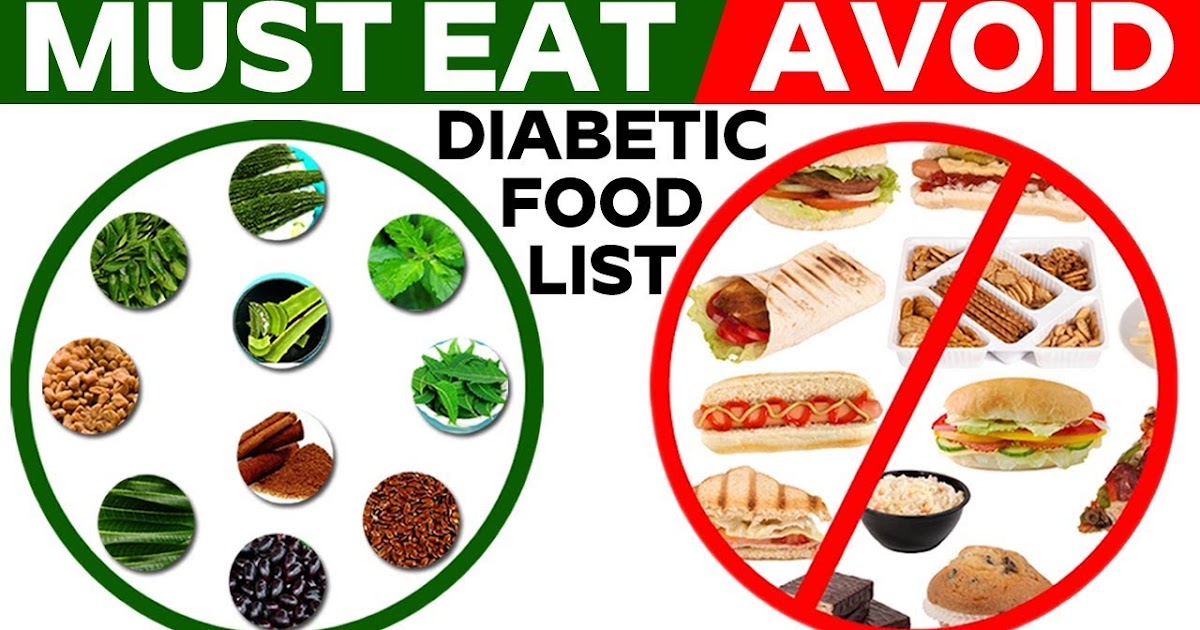
Finger food is food that's cut up into pieces big enough for your baby to hold in their fist with a bit sticking out.
Pieces about the size of your own finger work well.
Start off with finger foods that break up easily in their mouth and are long enough for them to grip.
Avoid hard food, such as whole nuts or raw carrots and apples, to reduce the risk of choking.
Examples of finger foods include:
- soft cooked vegetables, such as carrot, broccoli, cauliflower, parsnip, butternut squash
- fruit (soft, or cooked without adding sugar), such as apple, pear, peach, melon, banana
- grabbable bits of avocado
- cooked starchy foods, such as potato, sweet potato, cassava, pasta, noodles, chapatti, rice
- pulses, such as beans and lentils
- fish without bones
- hardboiled eggs
- meat without bones, such as chicken and lamb
- sticks of pasteurised full-fat hard cheese (choose lower salt options)
Baby-led weaning
Baby-led weaning means giving your baby only finger foods and letting them feed themselves from the start instead of feeding them puréed or mashed food on a spoon.
Some parents prefer baby-led weaning to spoon feeding, while others do a combination of both.
There's no right or wrong way. The most important thing is that your baby eats a wide variety of food and gets all the nutrients they need.
There's no more risk of choking when a baby feeds themselves than when they're fed with a spoon.
Find out more:
- help your baby enjoy new foods
- drinks and cups for babies and young children
- food allergies in babies and young children
- foods to avoid giving babies and young children
Feeding your baby: from 7 to 9 months
From about 7 months, your baby will gradually move towards eating 3 meals a day (breakfast, lunch and tea), in addition to their usual milk feeds, which may be around 4 a day (for example, on waking, after lunch, after tea and before bed).
As your baby eats more solid foods, they may want less milk at each feed or even drop a milk feed altogether.
If you're breastfeeding, your baby will adapt their feeds according to how much food they're having.
As a guide, formula-fed babies may need around 600ml of milk a day.
Gradually increase the amount and variety of food your baby is offered to ensure they get the energy and nutrients they need.
Try to include food that contains iron, such as meat, fish, fortified breakfast cereals, dark green vegetables, beans and lentils, at each meal.
Your baby's diet should consist of a variety of the following:
- fruit and vegetables, including ones with bitter flavours, such as broccoli, cauliflower, spinach and cabbage
- potatoes, bread, rice, pasta and other starchy foods
- beans, pulses, fish, eggs, meat and other non-dairy sources of protein
- pasteurised full-fat dairy products, such as plain yoghurt and cheese (choose lower salt options)
As your baby becomes a more confident eater, remember to offer them more mashed, lumpy and finger foods.
Providing finger foods as part of each meal helps encourage infants to feed themselves, develop hand and eye co-ordination, and learn to bite off, chew and swallow pieces of soft food.
Remember, babies do not need salt or sugar added to their food (or cooking water).
Feeding your baby: from 10 to 12 months
From about 10 months, your baby should now be having 3 meals a day (breakfast, lunch and tea), in addition to their usual milk feeds.
Around this age, your baby may have about 3 milk feeds a day (for instance, after breakfast, after lunch and before bed).
Breastfed babies will adapt their milk consumption as their food intake changes.
As a guide, babies fed infant formula will drink about 400ml daily.
Remember that formula-fed babies should take a vitamin D supplement if they're having less than 500ml of formula a day.
All breastfed babies should take a vitamin D supplement.
By now, your baby should be enjoying a wide range of tastes and textures.
They should be able to manage a wider range of finger foods, and be able to pick up small pieces of food and move them to their mouth. They'll use a cup with more confidence.
Lunches and teas can include a main course, and a fruit or unsweetened dairy-based dessert, to move eating patterns closer to those of children over 1 year.
As your baby grows, eating together as a family encourages them to develop good eating habits.
Remember, babies do not need salt or sugar added to their food (or cooking water).
Feeding your baby: from 12 months
From 12 months, your child will be eating 3 meals a day containing a variety of different foods, including:
- a minimum of 4 servings a day of starchy food, such as potatoes, bread and rice
- a minimum of 4 servings a day of fruit and vegetables
- a minimum of 350ml milk or 2 servings of dairy products (or alternatives)
- a minimum of 1 serving a day of protein from animal sources (meat, fish and eggs) or 2 from vegetable sources (dhal, beans, chickpeas and lentils)
Your child may also need 2 healthy snacks in between meals.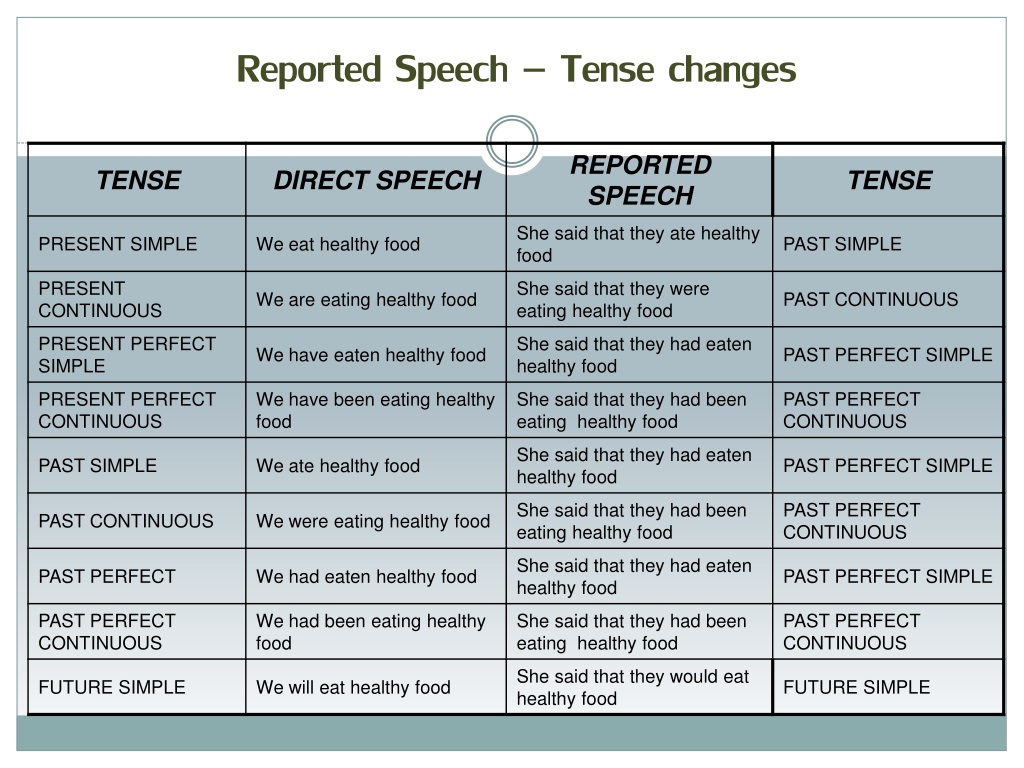
Go for things like:
- fresh fruits, such as apple, banana or small pieces of soft, ripe, peeled pear or peach
- cooked or raw vegetable, such as broccoli florets, carrot sticks or cucumber sticks
- pasteurised plain full-fat yoghurt
- sticks of cheese (choose a lower salt option)
- toast, pitta or chapatti fingers
- unsalted and unsweetened rice or corn cakes
The World Health Organization recommends that all babies are breastfed for up to 2 years or longer.
You can keep breastfeeding for as long as it suits you both, but your child will need less breast milk to make room for more foods.
Once your child is 12 months old, infant formula is not needed and toddler milks, growing-up milks and goodnight milks are also unnecessary.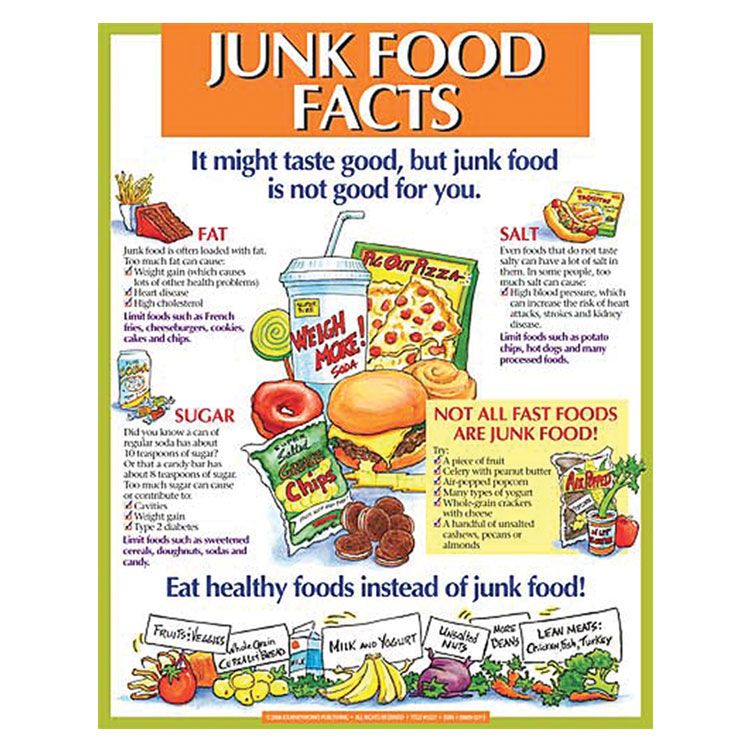
Your baby can now drink whole cows' milk. Choose full-fat dairy products, as children under 2 years old need the vitamins and extra energy found in them.
From 2 years old, if they're a good eater and growing well, they can have semi-skimmed milk.
From 5 years old, 1% fat and skimmed milk is OK.
You can give your child unsweetened calcium-fortified milk alternatives, such as soya, oat or almond drinks, from the age of 1 as part of a healthy, balanced diet.
Children under 5 years old should not be given rice drinks because of the levels of arsenic in these products.
Find out more:
- what to feed young children
- foods to avoid giving babies and young children
- drinks and cups for babies and young children
- vitamins for children
Get Start4Life pregnancy and baby emails
For information and advice you can trust, sign up for weekly Start4Life pregnancy and baby emails.
7 foods that are undesirable to give to children under one year old
Of course, modern mothers know that sausages should not be given to babies, soda and cream cakes. What else can not eat children under one year old? We made a list of 7 less obvious foods.
1. Salt
Excess salt in the diet is harmful to the baby's kidneys and can lead to swelling and dehydration. Of course, a lack of salt is also not useful, but in real life, with a normal diet, it practically does not occur: salt is contained in sufficient quantities in most foods, and there is no need to add salt on purpose. And if for us, adults, baby purees and cereals without salt and sugar seem tasteless and disgusting, don’t worry, for a baby, the situation is completely different.
The taste perception of young children is not yet spoiled by excessively sweet and salty foods, flavors and flavor enhancers. If your child refuses mashed broccoli, then most likely he just does not like the taste and texture of broccoli, and not at all the lack of salt.
2. Sugar
Everyone knows the dangers of excess sugar - dental problems, obesity, associated cardiovascular diseases and the risk of developing diabetes. However, it can be very difficult to refuse a cookie or candy to a child familiar with the sweet taste, and tears are usually inevitable. What to do?
The secret is simple - introduce foods with added sugar into your baby's diet as late as possible, at the earliest in the year, although it is better to wait until two years. The National Nutrition Optimization Program for Children aged 1 to 3 years recommends limiting sugar in the diet of toddlers 1 to 3 years of age to 25-30 grams per day, taking into account the sugar found in special baby foods, juices, yogurts, etc.
3. Honey
It would seem that honey is a wonderful and healthy alternative to sugar, so why is it not recommended for babies under one year old? In fact, the reasons some. First, honey can contain spores bacteria Clostridium botulinum. The immune system of adults and children older people can easily cope with them, but in babies they can cause a deadly disease called infantile botulism.
The immune system of adults and children older people can easily cope with them, but in babies they can cause a deadly disease called infantile botulism.
Secondly, honey is the strongest allergen, so it is better to postpone acquaintance with it until a later age.
4. Fruit juices and drinks
American Academy of Pediatrics (AAP) released in 2017 New recommendations for adequate intake of fruit juices in infants, young children and adolescents who begin with advice to completely avoid fruit juice for feeding infants life. According to AAP, excessive juice consumption can lead to diarrhea, overeating or, conversely, malnutrition, as well as to occurrence of dental caries*. At the same time, babies can and should be offered Whole fruit, mashed or pureed.
A various fruit drinks and nectars in addition to natural sugar from fruits often contain added sugar, which makes them perfectly unsuitable for feeding babies up to a year.
Breeding of juices and nectars with water does not completely solve the problem, since it does not reduce dental risks.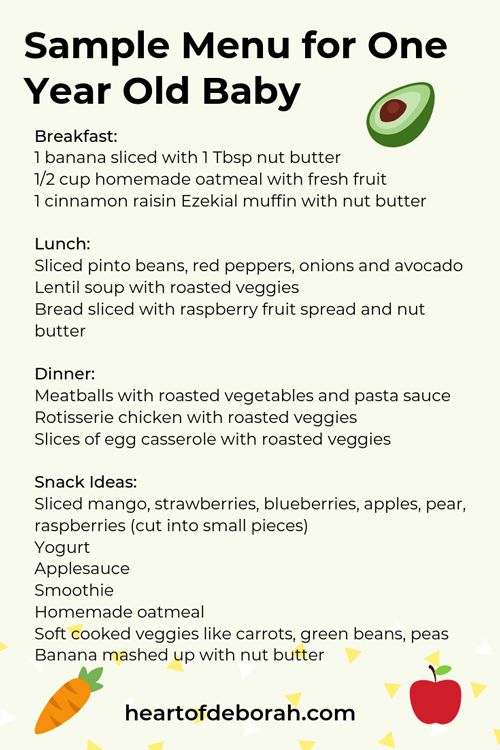 If your child refuses to drink water, try compotes and fruit or herbal teas.
If your child refuses to drink water, try compotes and fruit or herbal teas.
5. Foods that are easy to choke on
The danger of a product to children is determined by several characteristics: consistency, shape, and size. Most often babies gagging slippery, round, sticky, fibrous and hard products.
The most dangerous are all round and large enough to block the airways: lozenges, grapes, cherry tomatoes, nuts**. Not far behind in sad dangerous food rating other candies (especially sticky ones), fish bones and meat and, in fact, the meat itself ***.
Remember that theoretically a child can choke on any food, so never leave your baby unsupervised eating.
6. Egg white
Have you ever wondered why in all complementary feeding schemes is it the yolk, not the whole egg? Nothing surprising: egg protein is one of the strongest allergens. Up to a year is better limit the baby to only the yolk, and introduce the protein a little later.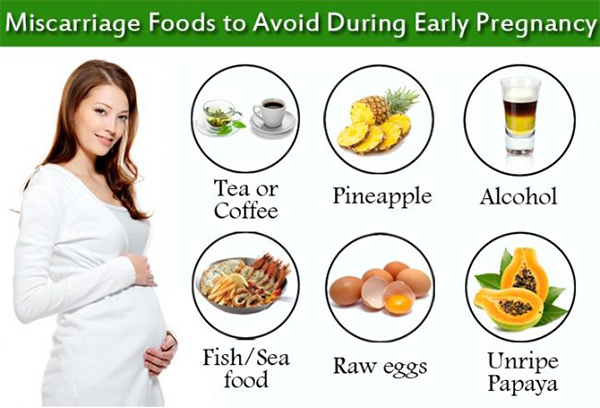
Only make sure the eggs are thoroughly cooked. Raw and half-raw eggs may contain a bacterium that causes salmonellosis, a disease deadly for young children.
7. Cow and goat milk
Surprised? Whole cow's milk is the main cause of allergies in children under one year old. In addition, it contains a large amount of lactose, milk sugar, which some babies have difficulty digesting due to the fact that their gastrointestinal tract is not yet sufficiently developed. There are studies linking the early introduction of animal milk into the diet as a substitute for mother's milk or infant formula with an increased risk of iron deficiency anemia and type 1 diabetes. ****
Goat milk is actually not much different from cow milk, goat and cow are evolutionarily close, goat milk proteins are very similar in structure to cow proteins, and almost as often cause allergies.
It is advisable to introduce cow's milk into the diet of a child not earlier than 1 year. Interestingly, this rule does not apply to special children's fermented milk products, they are easier to digest and useful for babies.
Interestingly, this rule does not apply to special children's fermented milk products, they are easier to digest and useful for babies.
When using any materials from the site nutriclub.ru, a link to the site is required.
© Nutriclub, 2020
You will also be interested
- Nutriclub - healthy nutrition and child development
- 0-12 months
- Lure
- unwanted foods for children
Diet and menu for a 1-year-old baby
— Anastasia Ivanovna, is the menu for a 1-year-old baby already food from the common table or is it a special children's menu? Can I give my child adult food?
— For a one-year-old child, adult food can be heavy and not always digested correctly. Therefore, the task of parents is to give the baby a lightweight version of the same food (try not to abuse salt, seasonings) and the most natural products.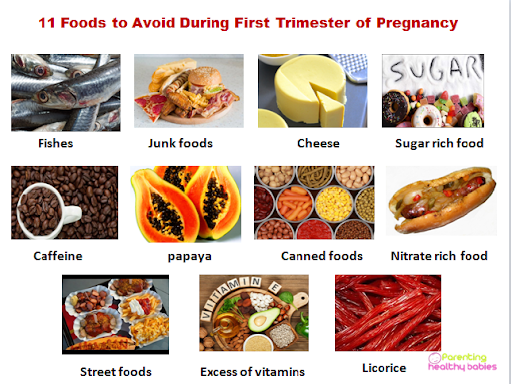
Different countries have their own specifics of baby food. For example, in France, children eat the same as adults who try to eat the right food. Children quickly get used to the general menu, do not run out from the table if they ate faster than the rest. In Russian families, they cook separately for adults and children. And for mom, “brain explosion” is to compose different dishes for family members. Therefore, it is easier to cook something average that both adults and children can eat.
— What actions of parents can disrupt the diet in one year?
— Each family has a certain list of products that are in the refrigerator, and the child knows about them. Parents mistakenly on a whim continue to buy the same thing, while it is necessary to diversify the diet, more often try seasonal inexpensive, but more healthy products. In addition, it is important that by the year the child sits at the table and understands how they eat, as well as the fact that he came to eat, and not play or watch TV.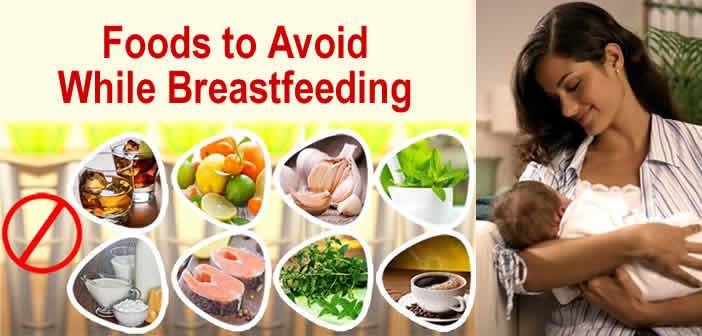
- Eat three main meals and two snacks.
- Eat foods that are accessible in consistency and form.
- Enter all food groups that the child should have tried by his age to make it easier to build a diet.
- Do not feed the baby.
- Give your child clean drinking water every day.
— What should I feed a child for a year so that he gets all the nutrients he needs for his age?
- Vegetables - selected by age, should take up half the plate.
- Fruits are given after vegetables because they are sweeter.
- Kashi is the main source of vitamins and minerals, calories.
- Cottage cheese and unsweetened yoghurts are sources of calcium, which is essential for growth.
- Soups - not all children eat them because of the consistency, but you can try natural vegetable cream soups from the children's food group.
- Meat is a source of protein and vitamins.
 If the family refuses meat, then the child will have to make up for the lack of something, for example, vitamin B12.
If the family refuses meat, then the child will have to make up for the lack of something, for example, vitamin B12. - Natural sweets and cookies - but they must be "verified". It is necessary to avoid products with the addition of margarine and trans fats, which will negatively affect the child's body.
The diet of a child after a year should be varied and balanced in trace elements and vitamins, proteins, fats and carbohydrates. A large amount of fiber is useful for the proper formation of microflora - dietary fiber helps to maintain a balance of beneficial and conditionally pathogenic bacteria in the body.
- Is it possible to include solid foods in the menu if the baby has only a couple of teeth erupted?
- Solid foods help form healthy eating habits and are great for teeth. Hard pieces form the correct bite. The more such food in the diet, the more space there will be in the oral cavity and the teeth will grow evener. As a nutritionist, I recommend giving solid foods to help teeth erupt faster. Orthodontists adhere to the same position.
As a nutritionist, I recommend giving solid foods to help teeth erupt faster. Orthodontists adhere to the same position.
— What foods should not be given to a one-year-old child?
- It is worth limiting fatty foods rich in cholesterol, as well as nuts, which can provoke an allergic reaction or get into the respiratory tract. Doctors also do not advise giving mushrooms - they contain a difficult to digest protein, this increases the load on the enzymatic system. You should not load the gastrointestinal tract, it is better to simply exclude such food from the diet.
- Among formulas, you can find the formula of the third step for children over 12 months old. What are the benefits of "baby milk" for older babies?
— Special baby milk formulas are needed if the child is not yet fully fed from the common table or the mother supplements him with formula at night. The mixture of the third stage, unlike ordinary milk, contains all the components necessary for the formation of mental abilities in children, that is, it is aimed not only at growth, but also at the development of the brain. If parents are interested in ensuring that vitamins and minerals are supplied to the child in a balanced way, it is advisable to turn to a milk formula, for example, a mixture with the MAMAKO Premium 9 IQ-complex0144® . The baby can be fed a limited range of foods, and the mother often worries if he gets all the necessary vitamins and minerals. The mixture during this period helps a lot.
If parents are interested in ensuring that vitamins and minerals are supplied to the child in a balanced way, it is advisable to turn to a milk formula, for example, a mixture with the MAMAKO Premium 9 IQ-complex0144® . The baby can be fed a limited range of foods, and the mother often worries if he gets all the necessary vitamins and minerals. The mixture during this period helps a lot.
- When compiling a menu for a week for a child of 1 year, what points should be taken into account? What determines the correct diet in one year?
— When compiling the menu, the presence or absence of allergic reactions, taste preferences, age and health of the baby are taken into account.
- Breakfast
— In the first meal, it is better to give porridge (long carbohydrates) or a protein product (scrambled eggs). The child needs to actively start the morning, and this requires energy, which is replenished during feeding.
- Lunch
— In the second main meal, only vegetables or a protein product are allowed, since the child still needs to actively express himself for half a day. In sports families with the most mobile children, there must be protein food during the day. Protein is the building block needed for muscle and cell growth. You can supplement the diet with a healthy vegetable cream soup, for example, from pumpkin or spinach, and carbohydrates are needed in smaller quantities.
In sports families with the most mobile children, there must be protein food during the day. Protein is the building block needed for muscle and cell growth. You can supplement the diet with a healthy vegetable cream soup, for example, from pumpkin or spinach, and carbohydrates are needed in smaller quantities.
- Dinner
— In the evening, it is advisable not to overload the body. You can give porridge 1.5-2 hours before bedtime or vegetables, steamed fish cakes - here the mother adjusts to the preferences of the child. Vegetable or fruit purees, supplemented with cottage cheese, diversify the diet. But you do not need to immediately go to bed after feeding, because the body needs time to digest.
- Snacks
- They break two big "windows" between breakfast and lunch, lunch and dinner. Which foods to choose for a snack depends on the age and well-being of the child.
— Anastasia Ivanovna, should the child take a nap after each meal?
— The child subconsciously develops a craving for sleep after feeding, but this is not a rule that should be observed. If the baby has no strength - he ran into the street, played non-stop for 1.5 hours, then ate - yes, he needs to replenish his strength, and he will fall asleep. In general, eating is a replenishment of energy costs, and after eating it is good to give up part of the energy - move around, look through a book.
If the baby has no strength - he ran into the street, played non-stop for 1.5 hours, then ate - yes, he needs to replenish his strength, and he will fall asleep. In general, eating is a replenishment of energy costs, and after eating it is good to give up part of the energy - move around, look through a book.
— Is it necessary to wean a child from night feedings if he wakes up at night and asks for food?
- Normally after a year - sleep without awakening. The child may wake up in a hot room, ask for a drink and sleep until the morning. But an awakened child is always a wake-up call for mom. The baby's anxiety can have a physiological or psychological connotation - something hurts, he is afraid of something, he is malnourished. Everything is checked empirically - the next day, feed the child more densely before bedtime. If he sleeps, it means that he was just hungry yesterday. If it continues to wake up, then by the method of elimination, further deal with other reasons.
Read also
- What parents should focus on when developing eating habits.
— If the diet at the age of 1 is not observed and the child refuses the family meal, is it necessary to force him to eat?
— It is definitely not necessary to force-feed, but we observe the regime. The child should form the habit of eating at the table with the family. Ideally, during breakfast, lunch and dinner, but at least one meal should be family.
If a child has tried the proposed product and does not want to eat it, he must understand that the next meal is not soon and, for example, he will have to drink water until morning. The kid should be clearly aware of the actions and words of the parents. All good habits are formed in early childhood.
The basic rule is that only those products that parents want to see on the child's menu appear in the house.
- Are fruit purees with goat's milk curd suitable for feeding children in one year? Can I give my baby puree instead of fruit if he doesn't want to eat it?
- Children's products labeled from 0 to 3 years can of course be given. But the usual "adult" cottage cheese in the diet of a one-year-old child can cause a negative reaction of the body.
But the usual "adult" cottage cheese in the diet of a one-year-old child can cause a negative reaction of the body.
Baby fruit purees with goat's milk curds are balanced and can replace fruit - this puree is offered by MAMAKO ® .
A one year old child's diet can include all products of natural origin, seasonal local products. You can not feed the baby very salty, canned, fried foods. At the same time, it is important to avoid one-sided nutrition, but foods should be selected according to age so as not to provoke an allergic reaction and digestive disorders.
* Breast milk is the best food for babies. WHO recommends exclusive breastfeeding for the first 6 months of a child's life and continued breastfeeding after complementary feeding until age 2 years. Before introducing new products into the baby's diet, you should consult with a specialist. The material is for informational purposes and cannot replace the advice of a healthcare professional. For nutrition of children from 6+ months.











